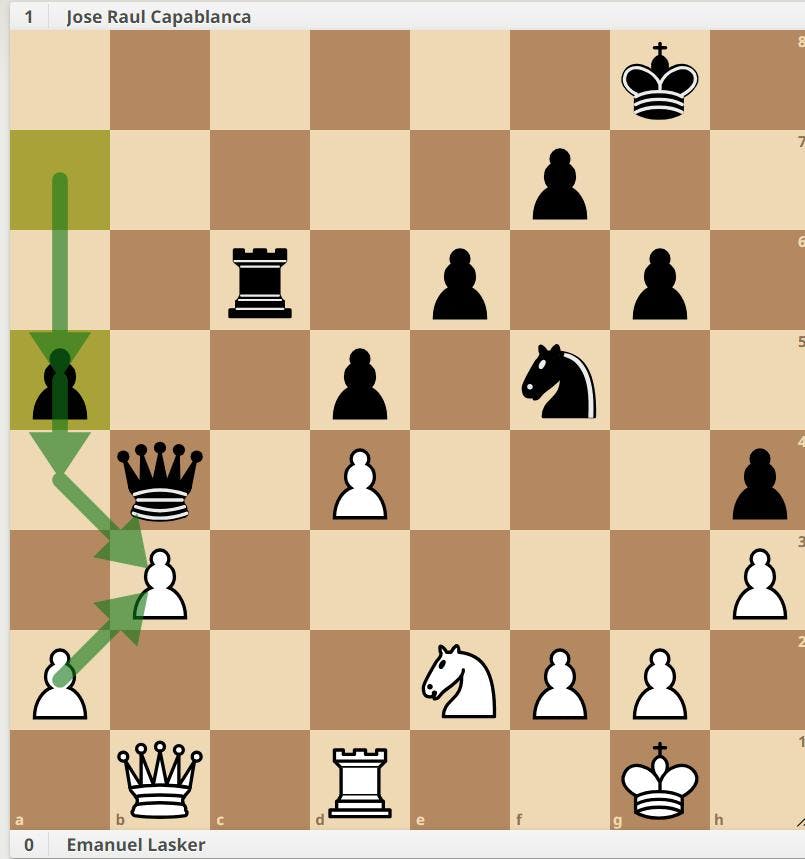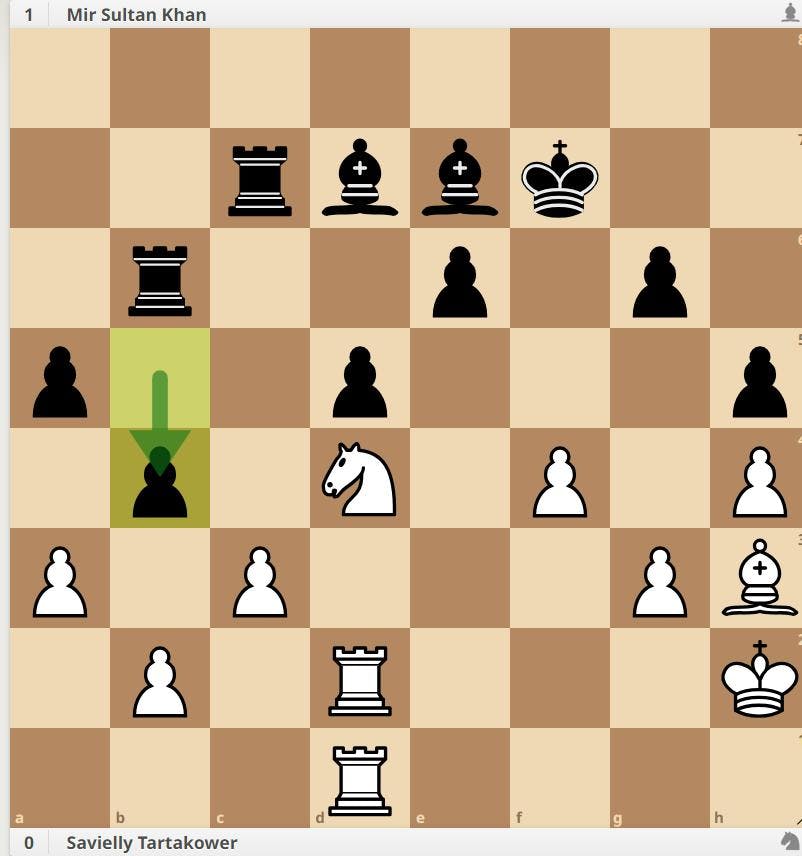
1. One pawn reduces two pawns to one

2. Two pawns reduce three pawns to one
A form of pawn break/lever where a pawn minority attacks a pawn majority. When a minority attack is successfully implemented, the majority is reduced to a single weak pawn, or a pair of weak doubled pawns on the same file. The minority attack is not some kind of ultimate weapon, but rather an essential aspect of good play. Frequently, if it can be played, it must be played. Hesitation may result in an opponent having a free hand on the other side of the board.
In position 1 (Lasker - Capablanca, 1921), black's a-pawn reduces white's queenside pawn majority to a single pawn on b3.
In position 2 (Tartakower - Sultan Khan, 1931), black threatens exchanges on b4 that will reduce white's queenside majority to a set of isolated doubled pawns on the b-file.
A successful minority attack creates one weakness. Often, more than one weakness is required to win a game of chess.
See: 'Weakness' and 'Principle of two weaknesses'.
